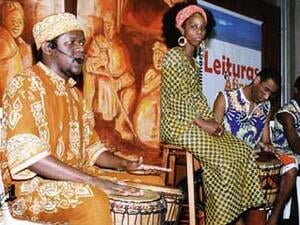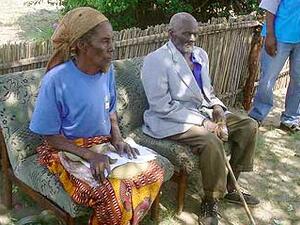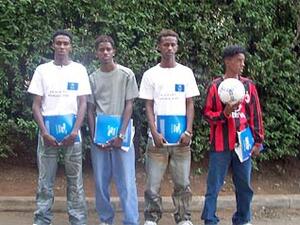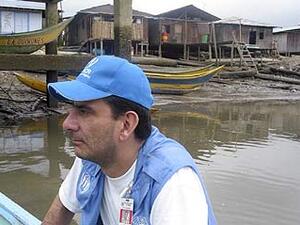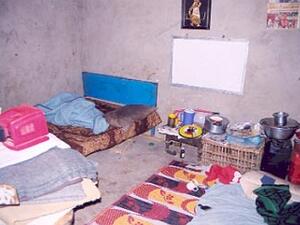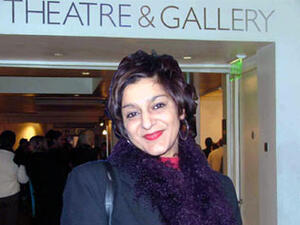Return to Croatia - Milana's Story
Return to Croatia - Milana's Story

Milana and her younger sister, Dragana, in the farmyard of their home in Majske Poljane, which means "Meadows of May." UNHCR/Andrej Mahecic
MAJSKE POLJANE, Croatia - Milana Grubic was only 10 when her parents hurriedly grabbed whatever they could carry, gathered their two small daughters and fled to Serbia as Croatian troops closed in on their home village of Majske Poljane in the hills of Croatia's Banovina region in 1995.
Nearly all of the village's Serb population fled with them. Only the elderly and the frail stayed behind, including Milana's grandparents.
Four years later, Milana went back to Croatia to spend the summer with her grandparents and then decided to stay in Majske Poljane - which means Meadows of May - for good.
"I came, I liked it and I did not want to go back," said Milana, adding that one week back in her home village was enough to convince her to stay. Although only 14 at the time, it was Milana's determination and her power of persuasion that made the rest of the family follow her back to Croatia six months later.
When the big day came, Milana had prepared everything for the arrival of her parents and her little sister, Dragana. She cleaned the house, heated it up and greeted them at the doorstep. The reunion was a moving moment, cherished by all.
Milana's story is somewhat unusual. It is generally the elderly who decide to return home first, despite the risks and uncertainties involved in trying to rebuild their lives among their former foes.
The Grubics are among more than 50,000 Croatian Serbs who have trickled back to their homes in Croatia since 1995, under a programme supported by UNHCR. Their village, located some 100 kms south-east of the Croatian capital, Zagreb, is a typical rural community. But the area saw three large displacements during the war.
Today, Milana and Dragana are studying at the elementary school in the nearby town of Glina. Every morning, a school bus collects the children from surrounding villages.
"There are a lot of returnee children in our school," says Milana, adding that she loves the school. "After school, I come back home and I study for an hour or two, then I watch a Mexican soap-opera on the telly and then I go out and play with my sister and other friends. We ride bicycles and roller-skate or we go to the woods where we play by a creek, in a small watermill we made."
But the smiling faces of children and the pretty landscape of picturesque hamlets and orchards in spring blossom mask a less idyllic picture. Many of the returning Serbs and their Croat neighbours living in a string of villages along the Bosnian border are struggling to get by on modest handouts from the Croatian government and charity groups. The Grubics say it was the economic uncertainty rather than the fear of a hostile reception by their Croat neighbours that delayed their decision to go back.
The Grubics have been given a milk cow by Catholic Relief Services, while the Croatian Red Cross has provided a stove and a few household items. They are trying to survive on a government subsidy of about $30 a month and the money they earn from selling milk to the local dairy company. They say life without jobs and a regular income is extremely difficult.
Yet, despite the many hardships, they hope things will change for the better and that, perhaps soon, they will be able to support themselves.
But until then, Majske Poljane will remain an imperfect idyll, despite the smiling faces of the returnee children.
By Andrej Mahecic
UNHCR Zagreb
(Editor's Note: UNHCR assists refugees like the Grubics in exile and on their return home throughout the Balkans. An estimated 1.4 million people uprooted by the Balkan wars are still unable to go back to their original homes.)

